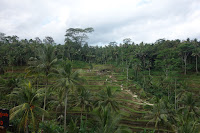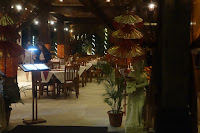Although the idea of making a documentary on a grand historical event such as 9/11, the sinking of the Titanic was intriguing, in reality there is no way we could have obtained footage to create one.
We had to look into topics that we could successfully talk about and portray within our areas. With Summer holidays booked, we had ideas of doing a travel documentary about our visits to Bali and Mexico; looking into historical places around us such as Stafford Castle and even finding people we knew who might simply have a story to tell. Whilst these were all viable ideas, none of them seemed interesting enough to carry out.
We then had the idea to do something current, and what is more current right now then Brexit? We both have a keen interest in Politics and thought that idea seemed realistic and would give us the chance to explore many different view points, stories etc. Having carried out our research, we knew we had to source an interview from somewhere. We thought anout interviewing young people who would be more effected by the vote or local business owners however, we then thought that getting someone of more importance might really benefit our documentary.
We knew that our local MP, Jeromy Lefroy, had worked closely with our school in the past, and thought that we should email him on the off chance he would be willing to come in and do an interview with us.
We sent the email with a plan B in mind, never expecting a response, but within a few days we got a response and arranged an interview with Mr Lefroy.
Naming our documentary:
Once we knew what our documentary was going to be based upon and we had our questions to guide us, we decided to think about different names that we could call it. We made a list of all the names, some relating to the date of the vote, a play on words etc. Below are the final names we decided were the best suited.
The name we decided to go with was 'A Close Call for Britain'. We liked this name because we thought that it wasn't directly related to Brexit, which is what we wanted as we spoke about the US election. We also knew that the best names were short and simple, which this was. It also used alliteration.
Our Target Audience:
As our documentary is based on politics, we knew that we were going to be targeting an
intellectual audience.
Brexit, and politics in general, is
a huge part of every British adults' life, it may even hold the interest of those who aren’t old enough to vote yet.
Because we feel like this is a universal topic, our target audience is mainly going to be adults, both men and women. However, as mentioned above those younger, perhaps 16-17. may also have an interest in the documentary as the result of the vote is mainly going to effect the younger generation in the future.
Because we feel like this is a universal topic, our target audience is mainly going to be adults, both men and women. However, as mentioned above those younger, perhaps 16-17. may also have an interest in the documentary as the result of the vote is mainly going to effect the younger generation in the future.
The documentary itself, we would
hope would be shown on the BBC. This is because we feel this is the best place for our target audience to be reached. It wouldn’t have to be necessarily shown
after the watershed, but we would aim that it was shown early evening, 5-6pm,
when adults who work are home. With the advancements in technology, BBC
iPlayer would provide us with the opportunity to further reach other audiences,
such as the younger generation, who might not watch live television
anymore.
Having our target audience in mind will help us further target them with our ancillary tasks. For example, we chose to do the newspaper advertisement rather than the magazine listing, as we thought our aimed intellectual audience are more likely to read a newspaper than a magazine. It also guided us in the type of vocabulary we would use in our documentary itself and within the ancillary tasks.
A Basic Plan:
Before we started planning the questions, we created a rough storyboard of how we wanted our end documentary to look. We used inspiration from ones we had watched in order for us to think about the continuity of our own. The storyboard also helped us stay on track and think of new ideas when it came to editing our own footage in post production.
Planning the interview questions:
Once we had the date for our interview confirmed we started planning what we were going to ask Mr Lefroy. We came up with a list of around 15 questions and together we narrowed it down to these 5.
These were the questions that we used, however in light of the American presidential election, we added another question in to listen to his thoughts on the release. We thought that not only would this be interesting but if we were creating a whole documentary, this would have been our next topic.
Location and Equipment Planning:
Once we had written out our questions, our next task was to find a suitable filming location and source suitable equipment to film on.
We had a few different options when it came to where we were going to film. We had three main options, our teachers office and two different meeting rooms around the school. We decided to go with the larger of the two meeting rooms, because it looked the most professional.
Once we had decided on our room, we had to figure out where wanted to place the camera, the microphones and the light. We drew up a basic plan and tried to follow it to the best of our ability.
The first thing we did was set up the camera to the correct angle. We wanted to be able to see the top of Mr Leforys shoulders, but we wanted the background view to be limited. We tested out different angles, and eventually found one with the correct level of focus that we wanted. The tripod we used allowed us to set this up quickly on the day of the interview and if we needed to, move it quickly on the day of the interview.
Within our research we noticed that on many interviews the camera would zoom in and out on hands and faces within interviews. We decided that we would leave the main camera rolling on the tripod throughout the whole interview and that Katie would walk around with a handheld camera, filming different shots, that we would later add into our documentary.
Below are some examples of the type of shots Katie managed to film with the handheld camera, which we would later add into our documentary.
Once we knew where we wanted the camera positioned, we played around with testing the sound quality, with and without the microphone. I sat and read out with the microphone at different lengths away from me, and without the microphone, whilst Katie recorded, so we could hear where was best to have the microphone.
When we were happy with where the microphone was going to be positioned, we decided that on the day it would be a good idea to have one of our phones on the table, out of camera view, to pick up the sound as well, just as a back up in case the microphone failed.
Once the sound and filming was sorted, we decided to use some artificial lighting around the room to see if it would help make the quality better.
Although it was only a small light, we managed to find a way to bounce it of a whiteboard and make the image appear brighter and clearer. We thought this would be a good back up plan in case the natural light wasn't very good, as we were having the interview in the morning, when the sun might not have risen yet.
Filming Day:
Mr Lefroy came to school for our interview at 9am and we arranged for it to last no more than 15-30 minutes. We informed him about why we were conducting the interview and asked him to keep his answers as short as possible, as our documentary was only allowed to ask 5 minutes.
The filming went to plan and we even managed to ask him and talk to him about additional topics which was very interesting.
The full interview with all 6 of our questions came to around 6 minutes and 40 seconds.

Filming the introduction:
As seen on our storyboard above, we wanted the introduction to have shots of London to set the scene of the documentary.
Below are the shots that Katie filmed whilst visiting, which we edited and played around with effects on for our documentary.
To view our post production and see our final documentary please go to Our Documentary: Post Production and Final Product























No comments:
Post a Comment